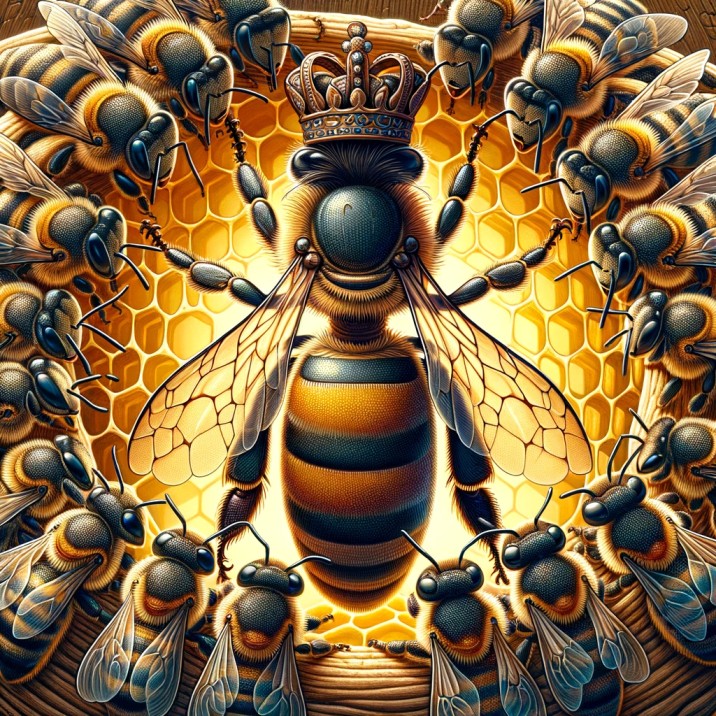The lifespan of a honey bee varies significantly depending on its role within the colony. On average, a worker bee lives for about 6 weeks during the active summer months, while queens can live up to 3 to 4 years. Drones, or male bees, have a shorter life span and typically live for about 8 weeks.
Worker Bees: The Short but Busy Lives

Worker bees, which are all female, have several stages in their short life. Initially, they serve as nurse bees, caring for the larvae and the queen. As they grow older, their roles transition to constructing and repairing the hive, foraging for nectar and pollen, and defending the hive. The intensive labor and constant activity take a toll on their bodies, especially their wings, leading to a shorter lifespan.
During the first half of their lives, worker bees are tasked with duties inside the hive. They start as nurse bees, feeding the larvae and caring for the queen. This involves producing royal jelly, a nutrient-rich substance that is vital for the development of young bees and the health of the queen. As nurse bees, they also maintain the cleanliness of the hive, removing debris and dead bees.
After about three weeks, their roles shift to more physically demanding tasks. They begin to produce beeswax, using special glands in their abdomens. This beeswax is then used to build and repair the honeycomb structures within the hive. During this phase, they also start to receive and store nectar and pollen brought in by forager bees, processing the nectar into honey.
As they age further, worker bees transition to roles outside the hive. They become foragers, venturing out to collect nectar, pollen, water, and propolis (a resinous mixture used as a sealant in the hive). This is perhaps the most dangerous phase of their lives, as they face threats like predators, harsh weather, and human-made obstacles.
Their final role is that of guard bees. They protect the hive entrance against intruders and ensure the safety of the colony. The strenuous nature of these outside tasks, especially flying long distances and constant wing movement, leads to physical wear and tear, contributing to their short lifespan.
The life of a worker bee is characterized by a transition from indoor to outdoor roles, each critical for the survival of the hive. Despite their short lives, worker bees play an indispensable role in the functioning of the bee colony and the broader ecosystem through pollination. Their diligent work ethic and complex social structure are truly remarkable aspects of the natural world.
The Queen Bee: A Longer Reign

The queen bee’s extended lifespan, lasting up to 3 to 4 years, is a stark contrast to the much shorter lives of worker bees. Her longevity is essential for the stability and continuity of the hive. As the sole egg-layer in the colony, the queen’s primary role is reproduction. She can lay thousands of eggs daily, a crucial task for maintaining the hive’s population.
Her longer life is supported by a specialized diet of royal jelly, a substance rich in nutrients that is fed to her by the worker bees. This diet is key to her fertility and overall health. The queen also plays a vital role in regulating the hive’s activities through the release of pheromones. These chemical signals help to organize the complex social structure of the colony.
The queen’s presence and health are vital for the hive’s well-being. Worker bees are instinctively attuned to her pheromones. A decline in her pheromone production can signal to the workers that it’s time to raise a new queen.
In essence, the queen bee’s longer reign is pivotal to the survival and success of the bee colony. Her extended lifespan allows her to oversee multiple generations of workers, ensuring the hive’s productivity and longevity.§
Drones: Living for Mating
Drones, the male bees in a honey bee colony, have a singular, yet crucial role: mating with the queen. Their entire life is geared toward this one purpose. Drones develop from unfertilized eggs and do not have stingers. Unlike worker bees, they do not contribute to nectar gathering or hive maintenance. Their primary function is to ensure genetic diversity within the hive by mating with a queen from another colony. Once they mate, they die shortly after, as the mating process is fatal to them. The life of a drone is brief, typically lasting only a few weeks during the mating season. Their presence is vital during this period, but they are often expelled from the hive as winter approaches, as they consume resources without contributing to the hive’s upkeep
Seasonal Variations in Lifespan
The lifespan of worker bees varies with the seasons. Those born in the autumn may live up to 6 months, as their primary role is to maintain and protect the hive through the winter. In contrast, summer-born workers live much shorter lives due to the increased activity and labor demands of foraging and hive maintenance.
The Impact of Environment and Colony Health
Environmental factors and the overall health of the colony also significantly impact the lifespan of honey bees. Pesticides, habitat loss, and diseases like Varroa mites can drastically reduce their lifespan. Healthy colonies with abundant food sources and minimal stress factors can support longer-living bees.
The lifespan of honey bees is a complex subject, influenced by their roles in the colony, the time of year they are born, and the environmental conditions they face. From the hardworking summer worker bees to the long-living queen, each bee plays a crucial role in the survival and functioning of their hive. Understanding the factors that affect their lifespan is essential for the conservation and management of honey bee populations, which are vital for pollination and biodiversity.

